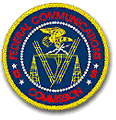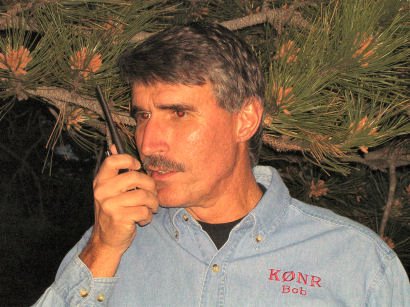Awesome June VHF Contest!
 It didn't start out all that great. First, my boss decides that I need to be in Scotland the week before the contest weekend. I have nothing against Scotland, I just preferred to not be there right before the biggest VHF contest of the year (ARRL June VHF QSO Party). I needed to be home putting together antennas, repairing cables, loading software, etc. ahead of the contest weekend.
It didn't start out all that great. First, my boss decides that I need to be in Scotland the week before the contest weekend. I have nothing against Scotland, I just preferred to not be there right before the biggest VHF contest of the year (ARRL June VHF QSO Party). I needed to be home putting together antennas, repairing cables, loading software, etc. ahead of the contest weekend.At the last minute, I piled all of the gear (well, most of it) into the SUV and we head to the mountains. I planned to set up my portable station at our antenna-less cabin in the western part of grid DM78. (Gotta get that tower up for next year.) My station consisted of an FT-847 on 2M and 70 cm, driving decent yagi antennas on those bands. On 2M, a linear amplifier boosted the output to 170W, so I had a decent signal on that band. For 6 Meters, I used an FT-100 running 100W to a 3-element yagi and on 222 MHz I just had an ICOM FM transceiver feeding a small yagi.
I downloaded N1MM logging software at the last minute and attempted to install it on my new Windows Vista PC. Turns out that Vista doesn't seem to like N1MM or vice versa. (I am bumping into this on occasion where some software aps are not fully checked out on Vista.) I bailed on N1MM and grabbed VHFLog by W3KM. It was the first time I have used it but it worked well for me.
There was very good sporadic-e propagation on 6M for a large portion of the contest, occasionally extending to 2M. This is the way the June contest is supposed to be! Six meters kept me quite busy and I am sure I missed some good rover contacts on the other bands. This is the downside of a single-op station when six is open. Most contacts were on SSB but I did use CW to grab a few grids on 2M and 6M (N0KE in DM69 and K0YW in DM67). Wow, my CW is getting rusty and it was tough going but I made the contacts.
I had 206 contacts on 6M, which I thought was quite good until I saw some of the other guys scores on the local email reflector....many of them did a lot better. Worked XE2YW in Mexico and a number of VE's in Canada. I was happy with the 15 grids on 2M, including a new grid via sporadic-e (W4VC EM81). I snagged KB0HH up in EM06 and N0YK in DM98.
This contest has reinforced the notion that for me, VHF is all about 2M and 6M. The Magic Band provides the excitement and 2M provides the challenge (with enough local activity to keep some interest going). The practice of moving on up to 222 MHz, 432 MHz and higher and just working the same guys over again doesn't seem as much fun. It definitely generates contest points but I am thinking more about VUCC and grid chasing. I will be optimizing my station to do better on 2M and 6M....upgrade the antennas, amplifiers, transceivers, etc.
Band QSOs X pt = QSO pts. X Grids = Points
---------------------------------------------------------------
50 206 1 206 125 25750
144 34 1 34 15 510
222 1 2 2 1 2
432 12 2 24 6 144
---------------------------------------------------------------
TOTALS 253 266 147 39102
Claimed score = 39102
73, Bob K0NR




